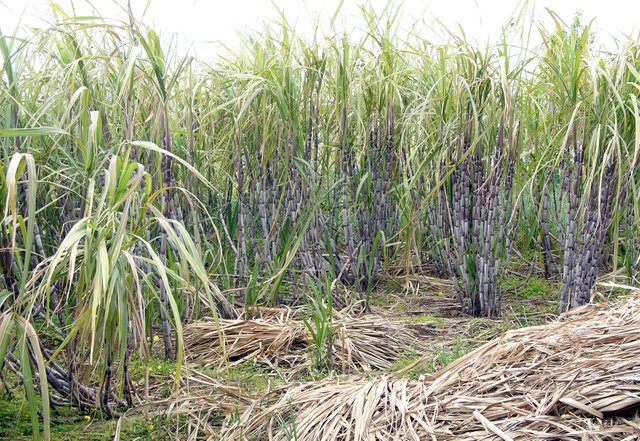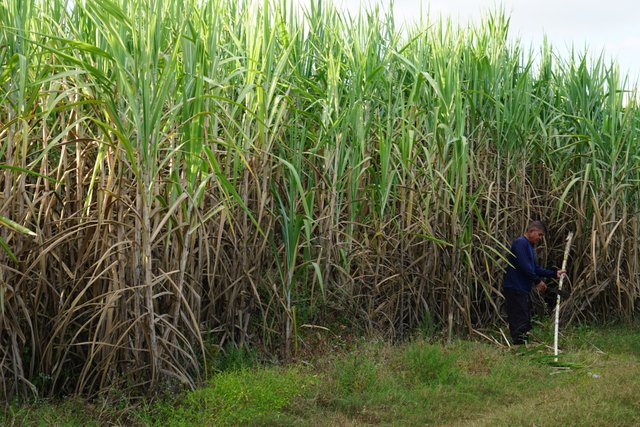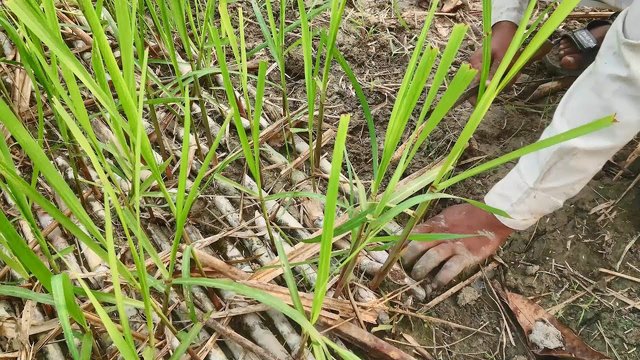Hello friends, I hope all will be well. I am also well. so let's start today diary.In Pakistan and in many other countries, sugarcane is an important agricultural and cash crop. A variety of agricultural climates, from hot dry environments at sea level to cool and moist ones at higher elevations, can be grown in tropical and subtropical regions of the world. Other products made from sugarcane include molasses, rum, and cachaça (a Brazilian alcohol); the plant itself can be used as a thatch and to feed livestock.

Sugar has a bad reputation these days, and there is such a thing as too much sugar. You could grow your own sugarcane if you are interested in more natural, unprocessed sugar to supplement a healthy diet. Syrup and chewing sugarcane are the types of sugarcane most useful in home gardens. Syrup sugarcane is processed to make syrup because it doesn’t crystallize easily. You can peel the soft, fibrous center of chewing canes and eat them or use them in recipes. One of the possible health benefits of sugarcane is weight loss. Research is currently being conducted into the possibility that eating sugarcane fiber will contribute to maintaining a healthy weight, losing weight, and reducing the risk of diabetes.

It may work because fiber tends to offset the adverse health effects of sugar, including slowing the rise in blood sugar when you eat sugar. Sugarcane also provides more nutrients than processed sugar. Among its many benefits, unprocessed sugar cane has polyphenols, antioxidants, protein, manganese, iron, calcium, potassium, and B vitamins. Sugar cane may help to reduce inflammation of the skin, lowering cholesterol levels, and reducing bad breath.
The sugar cane crop is extremely useful, and because it is native to tropical and subtropical climates, it does not thrive in cold temperatures.

Sugarcane belongs to the Saccharum family. Within this classification, there are five sugarcane varieties–three of which are cultivars and two of which are wild varieties.
What type of soil is ideal for sugarcane production? Well-drained loamy soil with pH 6.5 to 7.5, adequate nutrients, and without soil compaction.
It's easy to get drawn to unique and unusual plants when we are gardeners. If you live in tropical regions, you may have grown sugarcane and realized that it was a water hog. In addition to proper sugarcane water requirements, proper sugarcane irrigation depends on the climatic conditions in your region, type of soil, where the plant is grown (i.e. in a container) and watering method used.

Sugarcane needs about 1-2 inches (2.5 to 5 cm.) of water every week to maintain adequate soil moisture. The need for additional watering will also increase in periods of excessively hot or dry weather. Container-grown plants will also require more watering than those in the ground. Sugarcane planted in containers or in small patches is generally preferred to overwatering because wet foliage is prone to fungal issues.
The plant can be watered either at the base or by drip irrigation for larger areas.
Increasing their weight ratio for sugarcane crops by applying an ammonium salt of 2,3,6-trichlorobenzoic acid to the plant one month or less before harvest but no later than about 10 days before harvest in sufficient amounts to elevate sugar weight.